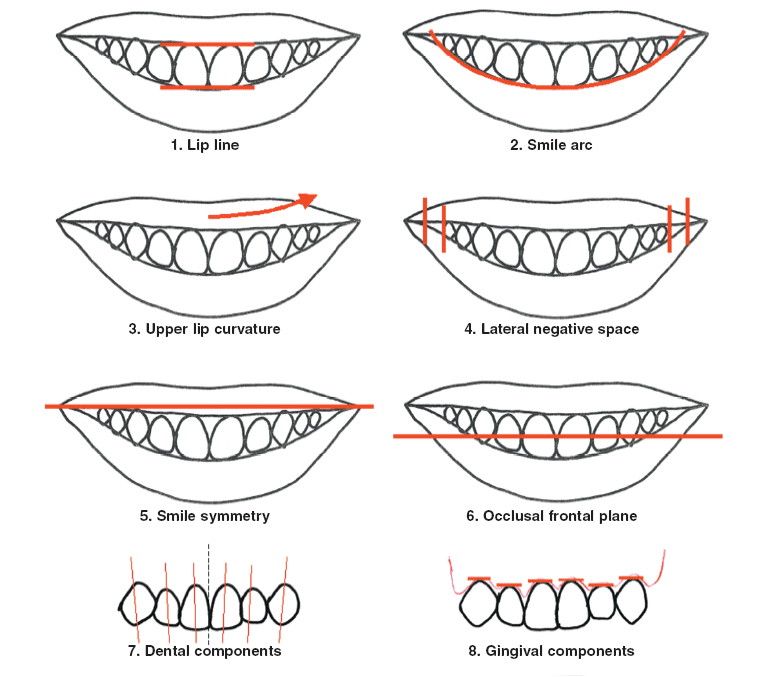See the Difference
a Smile Can Make
Excepteur sint occaecat cupidatat non proident, sunt in culpa qui officia deserunt mollit anim id est laborum. Non proident, sunt in culpa qui officia.
At Bovenizer & Baker Orthodontics, we treat many types of common orthodontic problems every day that are caused by both teeth and/or jaw discrepancies. Our Cary, NC practice is limited to orthodontics, which means that is our main focus and expertise.
Ideal Smile Diagram & Terminology

Overbite – Upper Jaw Ahead of the Lower Jaw
Overjet is where the upper jaw and teeth fit together ahead of the lower jaw. These patients usually exhibit a full facial profile with a deficient or weak chin. Typically, a class II problem is inherited or a result of persistent thumb sucking during jaw development. Correction of this disorder generally requires both tooth movement and appliances to encourage jaw development in order to bring the upper and lower jaws and teeth into their proper position.
Underbite – Lower Jaw Ahead of the Upper Jaw
Underbites are hereditary in origin. What happens is the lower jaw and teeth are protruding in front of the upper jaw structure. Facially, it promotes a very strong lower jaw which may look excessively large. In many cases the lack of upper jaw development is at fault resulting in the lower jaw looking too large.
Crossbite
Posterior crossbites usually result from a narrow upper jaw or unusually wide lower jaw. A narrow upper jaw will often force a patient to move their lower jaw forward or to the side in order to put their teeth together. When teeth are together, the upper teeth are positioned inside the lower teeth on one or both sides. This can result in abnormal jaw growth causing facial asymmetry and/or premature wear of tooth enamel causing permanent damage.
Openbite
When teeth don’t come together in the front, this is called and openbite which is also a skeletal jaw problem causing the upper and lower jaw to grow apart. Openbites can be hereditary, a result of thumb and finger habits, or caused by allergies and enlarged tonsils and adenoids.
Crowding of the Teeth
Crowding of teeth is the most common orthodontic problem requiring braces or Invisalign. Many factors contribute to teeth crowding. It usually is caused by a lack of space available in each jaw in relationship to the size of the teeth which are too large. Most patients and parents are concerned about how the teeth look, but poor alignment of teeth can cause dental health issue and gum problems. It also increases the risk of dental decay due to the inability to brush and floss teeth correctly when they overlap.
Spacing + Gaps
Spacing is the opposite of crowding and is normally caused when the upper and/or lower jaw is too big for the size of the teeth. This can be a hereditary problem or an issue with gum tissue attachments called “frenae” which prevent teeth from coming together. Overjets or “buck teeth” may also lead to spacing. Other contributing factors may be unusually narrow teeth, missing, or impacted teeth that are diagnosed with x-rays at your complimentary first visit.

Let's get started!
There's no time like the present! Click the button below to schedule your consultation.
Contact Us
